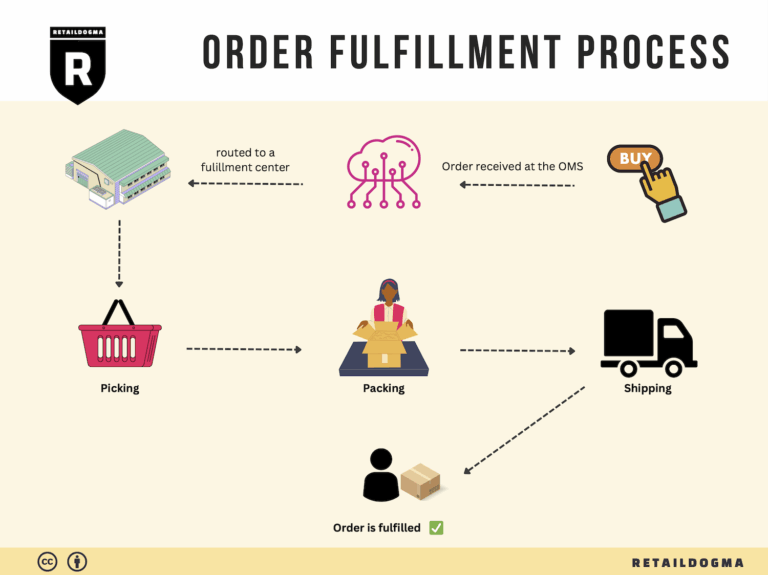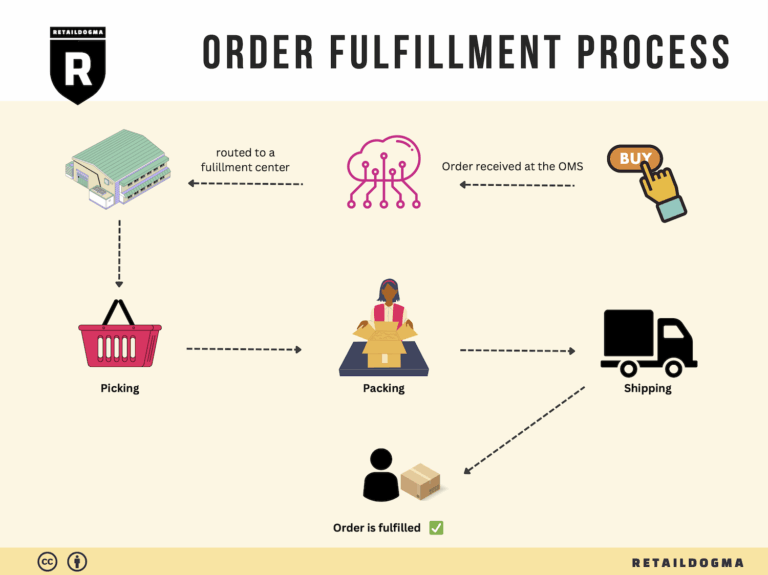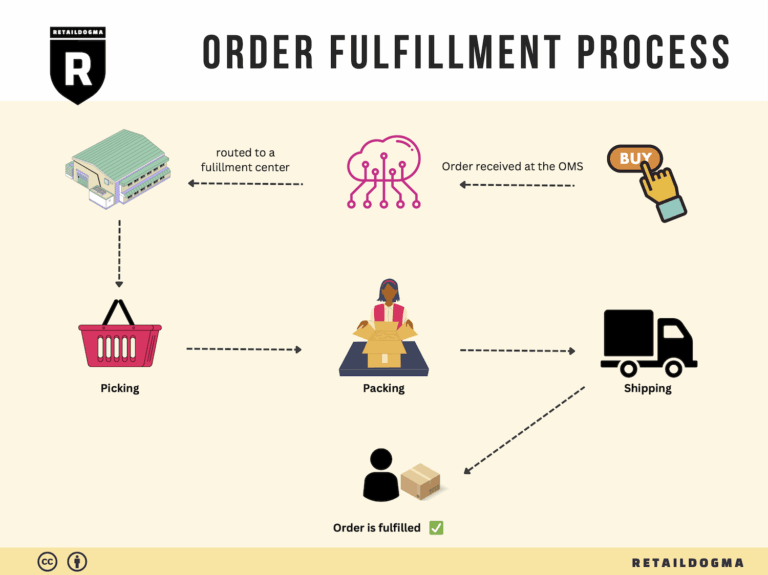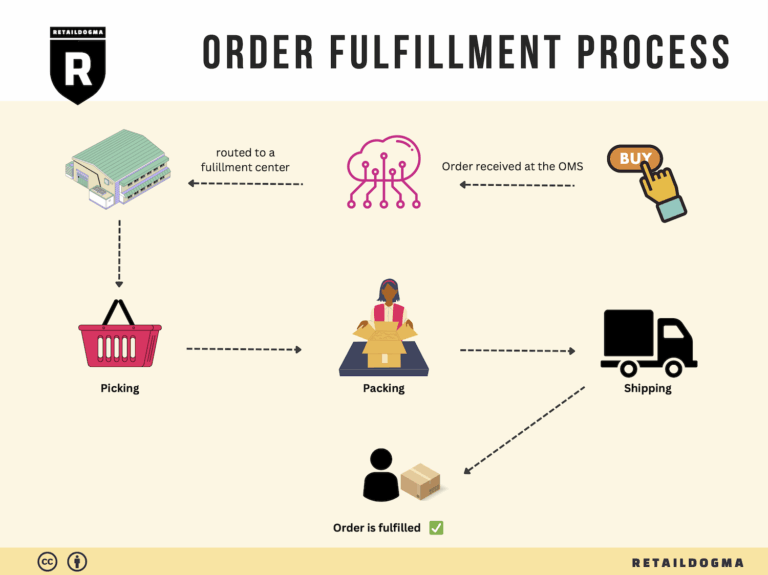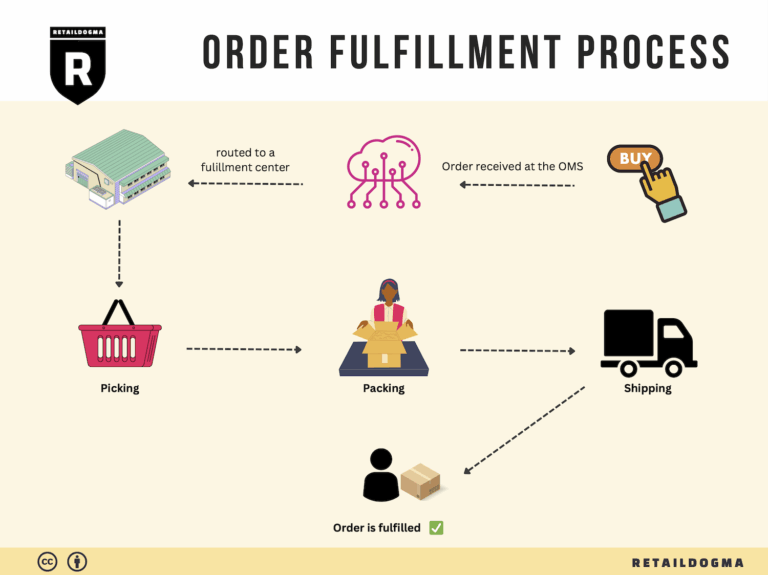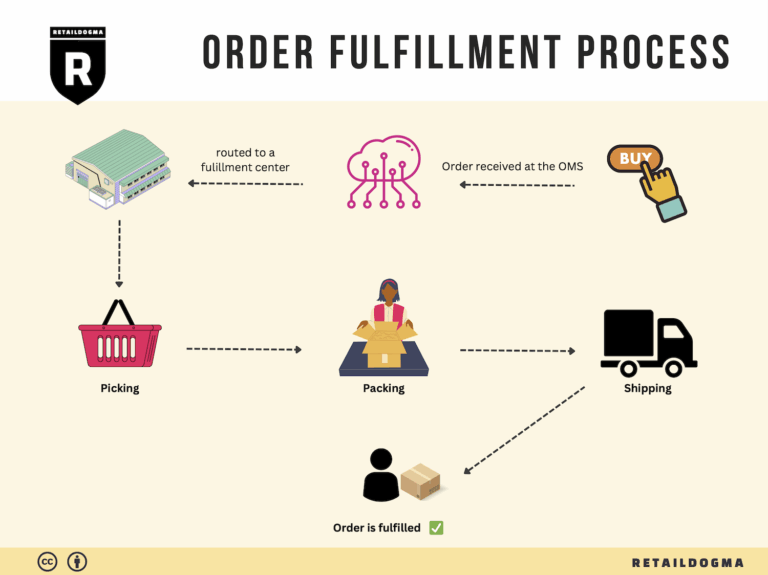Ecommerce Fulfillment Services: The Ultimate Guide (2025)
What is E-commerce Fulfillment? An Introduction for Growing Businesses
Understanding E-commerce Fulfillment
As a growing e-commerce business owner, you may find yourself grappling with the complexities of packing and shipping orders. This overwhelming process can drain your time and resources, diverting your attention from crucial activities like marketing and customer engagement. E-commerce fulfillment, at its core, refers to the comprehensive process of getting a product from your inventory to your customer’s doorstep. It encompasses everything from receiving orders and picking items to packaging them and arranging for shipping.
In this guide, we will demystify e-commerce fulfillment by exploring various models that can streamline your logistics. Among these, you will encounter options such as Third-Party Logistics (3PL) and Fulfillment by Amazon (FBA), each offering unique advantages suited to different business needs. Understanding these models is essential for selecting the right approach that aligns with your operational goals.
We’ll also delve into the core services integral to effective fulfillment, including inventory management, order processing, shipping, and returns handling. Each of these components plays a vital role in ensuring a smooth customer experience, which is paramount for retaining loyalty and driving repeat business.
Choosing the right fulfillment partner is another critical aspect we will cover. Factors such as reliability, scalability, technology integration, and customer service should guide your decision-making process. A well-chosen partner can not only enhance your operational efficiency but also provide you with the flexibility to adapt as your business scales.
Pricing is often a concern for many e-commerce entrepreneurs, and we will address how to navigate the costs associated with various fulfillment options. Understanding the pricing structures—be it per order, per item, or subscription-based—will empower you to make informed financial decisions that align with your budget and growth objectives.
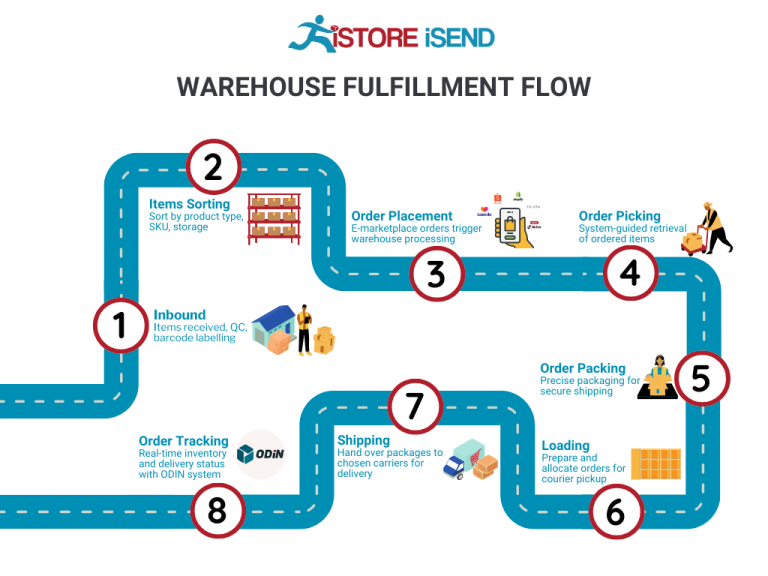
Ultimately, this guide aims to equip you with the knowledge needed to make strategic decisions about your logistics. By understanding e-commerce fulfillment, you can optimize your operations, reduce stress, and focus on what truly matters: growing your business and delighting your customers. Let’s embark on this journey to streamline your fulfillment process and set the stage for sustainable growth.
What You’ll Learn In This Guide
- What is E-commerce Fulfillment? An Introduction for Growing Businesses
- The Order Fulfillment Process: From ‘Buy’ Button to Customer’s Door
- Comparing Fulfillment Models: In-House vs. 3PL vs. Dropshipping
- A Deep Dive into Amazon FBA: Pros, Cons, and Who It’s For
- Core Services Offered by Fulfillment Centers
- How to Choose a Fulfillment Partner: A 6-Point Checklist
- Understanding Fulfillment Pricing: A Breakdown of Common Fees
- Frequently Asked Questions (FAQs) about Fulfillment
- Conclusion: Is Outsourcing Fulfillment the Right Move for Your Business?
- Important Disclaimer
The Order Fulfillment Process: From ‘Buy’ Button to Customer’s Door
1. Receiving Inventory
The order fulfillment process begins with receiving inventory at the fulfillment center. When products arrive at the Amazon Fulfillment Center in Dupont, WA, they are checked against purchase orders to ensure that the correct quantities and items have been delivered. This step is crucial because it establishes the foundation of an accurate inventory system. Key terms associated with this step include SKU (Stock Keeping Unit), which is a unique identifier for each product. Effective management of SKUs allows businesses to track inventory levels accurately, preventing stockouts or overstock situations.
Receiving inventory is vital for maintaining the flow of products through the supply chain. If discrepancies occur during this stage, they can lead to significant delays and complications later in the fulfillment process. A robust receiving process ensures that products are accounted for and ready to be stored, setting the stage for efficient operations.
2. Warehouse Storage
Once inventory is received and verified, the next step is warehouse storage. Products are systematically placed into designated storage locations within the fulfillment center. This organization is often facilitated by using bin locations or shelf numbers, which help in quickly locating items when orders come in.
Effective warehouse storage is essential for maximizing space and improving order picking efficiency. A well-organized warehouse reduces the time employees spend searching for products, directly impacting order fulfillment speed. Additionally, strategic placement of high-demand items closer to packing stations can further enhance operational efficiency. This step is not just about storing goods but optimizing the layout for quick access, thus supporting a smooth flow of products through subsequent stages.
3. Order Picking
When a customer places an order, the next step in the fulfillment process is order picking. Fulfillment associates are tasked with retrieving the ordered items from their storage locations. This process is often guided by pick lists, which detail the items and quantities needed for each order.
Order picking is a critical phase because it directly affects order accuracy and customer satisfaction. Errors at this stage can lead to shipping the wrong products, resulting in returns and negative customer experiences. To enhance picking accuracy, businesses can employ various strategies, including batch picking (where multiple orders are picked at once) or zone picking (where pickers are assigned specific areas of the warehouse). Efficient order picking not only speeds up the fulfillment process but also ensures that customers receive exactly what they ordered, fostering trust and loyalty.
4. Order Packing
After items are picked, they move to the packing stage. Here, associates prepare the products for shipment by carefully packing them into boxes. The packing process involves not only placing items in boxes but also incorporating protective materials to minimize damage during transit. Key considerations include dimensional weight pricing, where the size of the package can affect shipping costs.
Packing is crucial because it ensures that products arrive at the customer’s door in perfect condition. A well-executed packing strategy can also optimize shipping costs, as properly sized packages take up less space and may qualify for lower shipping rates. Businesses should also consider branding during this phase; custom packaging can enhance customer experience and reinforce brand identity, making unboxing a memorable experience.
5. Shipping & Delivery
The final step in the order fulfillment process is shipping and delivery. Once packages are packed, they are labeled and handed over to shipping carriers for delivery. This step is vital as it represents the last opportunity to meet customer expectations regarding delivery times and service quality. Key terms associated with this phase include last mile delivery, which refers to the final leg of the shipping process that delivers products from a distribution center to the customer’s doorstep.
Effective shipping and delivery strategies can significantly impact customer satisfaction and retention. Businesses should explore various shipping options, including expedited shipping for time-sensitive orders and standard shipping for cost-sensitive customers. Additionally, providing real-time tracking information can enhance the customer experience by keeping them informed about their order’s status. Ultimately, a streamlined shipping and delivery process not only fulfills the order but also builds a positive relationship with customers, encouraging repeat business.
In summary, the order fulfillment process is a series of interconnected steps that, when executed efficiently, can lead to increased customer satisfaction and business growth. By understanding and optimizing each stage—from receiving inventory to shipping and delivery—e-commerce businesses can scale their operations effectively.
Comparing Fulfillment Models: In-House vs. 3PL vs. Dropshipping
Fulfillment Model Comparison
| Model | Who Handles Inventory | Best For (Business Stage) | Key Advantage | Key Disadvantage |
|---|---|---|---|---|
| In-House Fulfillment | The business itself | Established businesses | Full control over inventory | High overhead costs |
| Third-Party Logistics (3PL) | A third-party logistics provider | Startups to growing businesses | Scalable and flexible operations | Less control over inventory |
| Dropshipping | Supplier/vendor | New and small businesses | Low startup costs | Lower profit margins |
In-House Fulfillment
In-house fulfillment is a model where the e-commerce business manages all aspects of inventory storage, order processing, and shipping internally. This approach gives businesses complete control over their inventory, allowing for customization and a tailored customer experience. Businesses can optimize their logistics processes according to their unique operational needs, which can enhance speed and efficiency. In-house fulfillment is particularly beneficial for established companies with stable sales volumes, as they have the resources to invest in warehousing, staff, and technology. However, the major downside is the high overhead costs associated with maintaining a warehouse, hiring staff, and managing logistics. This model requires substantial upfront investment and ongoing operational expenses, which may not be feasible for smaller businesses or those just starting out.
Third-Party Logistics (3PL)
Third-party logistics (3PL) providers offer a flexible and scalable solution for businesses looking to outsource their fulfillment processes. In this model, a third-party company handles all logistics, including warehousing, inventory management, and shipping. This approach is ideal for startups and growing businesses that may not have the resources to manage fulfillment in-house. By partnering with a 3PL, companies can benefit from the provider’s expertise, advanced technology, and existing infrastructure, allowing them to focus on core business activities such as marketing and product development. Additionally, 3PLs often provide scalability, making it easier for businesses to adapt to fluctuations in demand without the burden of managing excess inventory. However, the key disadvantage is the potential loss of control over inventory and fulfillment processes, which can lead to issues with order accuracy and customer satisfaction if not managed properly.
Dropshipping
Dropshipping is a fulfillment model where the retailer does not keep products in stock. Instead, when a customer places an order, the retailer purchases the item from a third-party supplier who then ships it directly to the customer. This model is particularly attractive for new and small businesses due to its low startup costs and minimal financial risk. Entrepreneurs can start an e-commerce store without the need for significant inventory investment, making it easier to test new products and markets. However, dropshipping comes with its own set of challenges, including lower profit margins due to reliance on suppliers, potential delays in shipping, and limited control over product quality and inventory levels. Businesses must also invest time in finding reliable suppliers to ensure that they can maintain customer satisfaction and manage returns effectively.
In summary, the choice of fulfillment model depends on various factors, including the stage of the business, available resources, and long-term growth strategies. Each model has its unique advantages and disadvantages, and e-commerce businesses must carefully evaluate their specific needs and market conditions to select the most suitable approach for their operations.
A Deep Dive into Amazon FBA: Pros, Cons, and Who It’s For
Understanding Fulfillment by Amazon (FBA)
Fulfillment by Amazon (FBA) is a service offered by Amazon that allows sellers to store their products in Amazon’s fulfillment centers. Amazon then takes care of storage, packaging, shipping, and customer service for these products. This service is designed to streamline the sales process for e-commerce businesses, enabling them to focus on growth while leveraging Amazon’s vast logistical infrastructure.
How FBA Works
-
Product Listing: Sellers create product listings on Amazon, specifying the details and pricing of their products.
-
Inventory Shipment: Sellers ship their products to Amazon’s fulfillment centers. In the case of the Dupont, WA fulfillment center, items can be sent directly to 2700 Center Dr, Dupont, WA 98327.
-
Storage: Once received, the products are stored in Amazon’s warehouses. Amazon manages the inventory, ensuring that products are available for order.
-
Order Fulfillment: When a customer places an order, Amazon picks, packs, and ships the product directly to the customer. This process benefits from Amazon’s advanced logistics and shipping capabilities.
-
Customer Service: Amazon handles all customer service inquiries and returns for the products sold through FBA. This includes managing returns, refunds, and customer queries.
-
Tracking and Reporting: Sellers have access to a dashboard that provides insights into inventory levels, sales data, and performance metrics.
Pros of Using FBA
Prime Eligibility
One of the most significant advantages of FBA is that products become eligible for Amazon Prime, which can significantly increase visibility and sales. Prime members are more likely to purchase items that offer free two-day shipping, making FBA an attractive option for sellers looking to capture the Prime market.
Customer Trust
Amazon has built a reputation for reliability and customer satisfaction. By using FBA, sellers can leverage this trust. Customers often feel more secure purchasing from sellers using FBA due to Amazon’s well-established processes for shipping and customer service.
Multi-Channel Fulfillment
FBA isn’t limited to Amazon’s marketplace. Sellers can also use FBA to fulfill orders from their own websites or other platforms. This multi-channel fulfillment capability allows businesses to streamline their logistics under a single system while reaching a broader customer base.
Cons of Using FBA
High Fees
While FBA offers numerous benefits, it comes with costs that can quickly add up. Sellers are charged for storage space in Amazon’s warehouses and fulfillment fees for each item sold. These fees can significantly impact profit margins, especially for low-cost items.
Strict Inventory Rules
Amazon has stringent inventory management policies that sellers must adhere to. This includes guidelines on inventory levels, packaging requirements, and labeling. Failure to comply can result in additional fees or penalties, complicating the selling process.
Commingling Risks
FBA employs a commingling strategy, where inventory from multiple sellers is stored together. While this can enhance efficiency, it also poses risks. If a customer receives a defective or damaged product that was commingled with other sellers’ inventory, it can lead to negative reviews and impact the seller’s reputation, even if they were not at fault.
Who is FBA Best For?
FBA is particularly beneficial for small to medium-sized e-commerce businesses looking to scale rapidly without the overhead of managing their own fulfillment logistics. Here are some specific scenarios where FBA shines:
-
New Sellers: Entrepreneurs who are just starting and lack the infrastructure to manage storage, shipping, and customer service can leverage FBA to enter the market more easily.
-
High-Volume Sellers: Businesses that experience high sales volumes can benefit from Amazon’s logistics efficiency, allowing them to fulfill orders quickly and reliably.
-
Brands Seeking Exposure: Companies aiming to enhance brand visibility can utilize FBA to tap into Amazon’s vast customer base, particularly the Prime membership.
-
Sellers with Seasonal Products: Businesses that sell seasonal or fluctuating inventory can take advantage of FBA’s flexibility, avoiding the need for long-term storage solutions.
-
Multi-Channel Retailers: Brands that sell on multiple platforms can streamline their logistics by using FBA for all their order fulfillment needs.
In conclusion, Fulfillment by Amazon offers a powerful solution for e-commerce businesses looking to optimize their sales and logistics. While the benefits of increased visibility, customer trust, and streamlined fulfillment are substantial, sellers must carefully consider the associated costs and operational requirements. For many, the trade-offs will be worth it, particularly for those aiming for growth in the competitive e-commerce landscape.
Core Services Offered by Fulfillment Centers
Inventory Management & Warehousing
Inventory management is a critical component of any e-commerce operation, and fulfillment centers excel in providing comprehensive solutions in this area. Fulfillment centers like the Amazon Fulfillment Center in DuPont, WA, offer sophisticated inventory management systems that track stock levels, sales trends, and restocking needs in real-time. This allows e-commerce businesses to maintain optimal inventory levels, reducing the risk of overstocking or stockouts.
The benefits of effective inventory management include improved cash flow and reduced holding costs. By leveraging the technology and expertise of a fulfillment center, e-commerce businesses can ensure that their products are always available for customers, which is essential for maintaining customer satisfaction and loyalty. Furthermore, accurate inventory tracking can provide valuable insights into product performance, enabling businesses to make informed decisions about which products to promote or discontinue.
Pick and Pack Services
Pick and pack services are at the heart of the fulfillment process. This service involves selecting items from the warehouse based on customer orders and packaging them for shipment. Fulfillment centers employ advanced systems and trained staff to efficiently execute this process, ensuring that orders are accurately fulfilled and shipped on time.
The primary benefit of pick and pack services is the speed and accuracy with which orders are processed. E-commerce businesses can significantly reduce their order fulfillment time, which is crucial in an environment where consumers expect rapid delivery. Additionally, professional packing minimizes the risk of damage during transit, ensuring that products arrive in excellent condition. This not only enhances customer satisfaction but also reduces return rates, ultimately improving a business’s bottom line.
Kitting and Assembly
Kitting and assembly services involve grouping various products together into a single package, often with additional assembly required. For example, if a customer orders a set of kitchen utensils, a fulfillment center can assemble them into a single kit before shipping. This service is particularly beneficial for businesses that offer complex products or promotional bundles.
The advantages of kitting and assembly include streamlined operations and enhanced customer experience. By outsourcing these tasks to a fulfillment center, e-commerce businesses can focus on their core competencies, such as marketing and product development, while ensuring that their customers receive well-packaged, ready-to-use products. Additionally, kitting can lead to cost savings in shipping, as multiple items can be shipped together, reducing overall shipping costs and improving efficiency.
Returns Management (Reverse Logistics)
Returns management is an often-overlooked aspect of the fulfillment process, yet it is crucial for maintaining customer satisfaction and loyalty. Fulfillment centers provide robust returns management services that streamline the process of handling product returns. This includes receiving returned items, inspecting them for quality, restocking them, and managing customer refunds or exchanges.
The benefits of effective returns management are multifaceted. For one, a seamless returns process enhances the customer experience, as shoppers are more likely to make a purchase if they know they can easily return an item if it doesn’t meet their expectations. Additionally, efficient returns management can provide valuable data regarding product performance and customer preferences, helping e-commerce businesses identify issues and improve their offerings. By minimizing the hassle associated with returns, fulfillment centers contribute to higher customer retention rates and increased lifetime value.
Conclusion
In conclusion, fulfillment centers play a vital role in the success of e-commerce businesses by providing essential services that streamline operations and enhance customer satisfaction. From inventory management and pick and pack services to kitting and assembly, and returns management, each service offered by fulfillment centers like the Amazon Fulfillment Center in DuPont, WA, adds significant value. By leveraging these services, e-commerce businesses can scale their operations more efficiently, respond to market demands quickly, and ultimately drive growth in a competitive landscape.
How to Choose a Fulfillment Partner: A 6-Point Checklist
Location & Warehouse Network
Importance: The geographic location of your fulfillment partner is crucial for efficient shipping and reduced transit times. A partner with warehouses strategically located near your customer base can significantly enhance delivery speed, which is particularly important for e-commerce businesses competing on quick shipping times.
Questions to Ask:
– Where are your warehouses located, and how do they align with our primary customer demographics?
– How do you manage shipping logistics across multiple locations?
– Can you provide insights into your delivery times and shipping methods for different regions?
Technology & Integrations
Importance: In today’s digital landscape, the technology your fulfillment partner uses can be a game-changer. Efficient order processing, inventory management, and real-time tracking rely on advanced systems. Moreover, seamless integration with your existing platforms (like your e-commerce site or ERP system) is vital for operational efficiency.
Questions to Ask:
– What technology do you use for inventory management, and how does it integrate with our systems?
– Can you provide real-time tracking for our shipments and inventory levels?
– How do you handle data security and compliance with industry standards?
Specializations (e.g., Cold Storage, Oversized Items)
Importance: Depending on the nature of your products, you may require specific handling capabilities. For instance, businesses dealing with perishables need partners with cold storage facilities, while those selling furniture or equipment might need expertise in managing oversized items.
Questions to Ask:
– Do you have specialized facilities for products that require temperature control or special handling?
– What experience do you have with our product type, and can you provide case studies or references?
– How do you ensure compliance with regulations related to our specific product category?
Scalability & Capacity
Importance: As your business grows, your fulfillment needs will likely change. A partner that can scale operations in line with your growth—whether that means expanding warehouse space, increasing staff, or enhancing technology—is essential for maintaining service quality and efficiency.
Questions to Ask:
– How do you handle peak seasons or sudden spikes in order volume?
– What is your capacity for scaling operations, and how quickly can you adapt to our changing needs?
– Can you provide examples of how you have successfully scaled for other clients?
Pricing and Contracts
Importance: Understanding the pricing structure and contract terms is fundamental to ensuring that your partnership remains profitable. Hidden fees or unfavorable terms can erode margins, so transparency in pricing is key.
Questions to Ask:
– What is your pricing model, and are there any additional fees we should be aware of (e.g., storage, handling, shipping)?
– How do you handle pricing adjustments, particularly during peak seasons?
– What are the terms of your contract, and is there flexibility for renegotiation as our needs change?
Customer Support & Reviews
Importance: Exceptional customer support can differentiate a good fulfillment partner from a great one. You want to ensure that any issues that arise can be resolved quickly and effectively. Additionally, understanding how other businesses view their service can provide valuable insights.
Questions to Ask:
– What customer support channels do you offer (e.g., phone, email, chat), and what are your response times?
– Can you share references or case studies from other clients in our industry?
– How do you handle disputes or issues that may arise during the fulfillment process?
Conclusion
Choosing the right fulfillment partner is a critical decision that can significantly impact your e-commerce business’s efficiency and customer satisfaction. By thoroughly evaluating potential partners based on the checklist above, you can ensure that you select a fulfillment provider that not only meets your current needs but also supports your growth and operational goals in the long run.
Understanding Fulfillment Pricing: A Breakdown of Common Fees
Initial Setup Fees
Initial setup fees are typically the first charges you will encounter when partnering with a fulfillment center like Amazon’s Dupont facility. These fees cover the costs associated with onboarding your business into their system. They may include account setup, integration with your existing e-commerce platform, and the initial configuration of your product listings.
The calculation of initial setup fees can vary significantly based on the complexity of your operations. For instance, if you have a large number of SKUs or require advanced technology integrations, these fees may be higher. It’s essential to clarify what services are included in the setup fee to avoid any unexpected costs later.
Receiving Fees
Receiving fees are charged when inventory arrives at the fulfillment center. This fee accounts for the labor and resources needed to unload, inspect, and store your products in the warehouse.
Typically, receiving fees are calculated based on the volume of goods being received, often measured in units or pallets. For example, if you send 100 units, the fulfillment center may charge a set fee per unit, which could range from a few cents to several dollars depending on the complexity of the goods and the facility’s operational costs.
It’s advisable to ensure your products are correctly labeled and packed to minimize additional handling fees upon arrival.
Storage Fees (per pallet/bin)
Storage fees are ongoing charges for keeping your inventory in the fulfillment center. These fees are usually calculated on a monthly basis and can be based on the volume of space your products occupy, often measured in pallets or bins.
Amazon, for instance, may charge a standard fee per pallet per month. However, this can vary based on the time of year; for example, storage fees may increase during peak seasons like the holidays when demand is high. To manage these costs effectively, keep an eye on your inventory levels and consider implementing a just-in-time inventory strategy to minimize excess stock.
Pick & Pack Fees (per item/order)
Pick and pack fees are charged for the labor involved in selecting (picking) products from inventory and packaging (packing) them for shipment. This fee is generally calculated on a per-item or per-order basis.
For instance, if a customer orders three different items, the fulfillment center may charge a fee for picking each item plus a packing fee for the order as a whole. The exact fees can depend on factors such as the complexity of the order, the type of packaging required, and any special handling needs.
To optimize these fees, consider consolidating orders where possible and using standard packaging materials to reduce costs.
Shipping Fees
Shipping fees are incurred when products are sent out to customers. These fees can vary widely based on several factors, including the shipping method chosen (standard, expedited, etc.), the weight and dimensions of the package, and the destination.
Amazon typically offers several shipping options, each with its own fee structure. For example, Prime members may receive discounted rates, while international shipping may incur additional costs. To get the best rates, it’s important to compare shipping options and understand how your fulfillment center calculates these fees.
Tips for Getting an Accurate Quote
To ensure you receive an accurate quote from a fulfillment center like Amazon in Dupont, consider the following tips:
-
Provide Detailed Information: Be transparent about your product types, volumes, and any special handling requirements. This allows the fulfillment center to give you a more precise quote.
-
Ask About Fee Structures: Inquire about how each fee is calculated. Understanding the nuances of each charge can help you manage costs more effectively.
-
Consider Seasonal Variations: Be aware that some fees may fluctuate during peak seasons. Ask about any potential changes in pricing throughout the year.
-
Review Contracts Carefully: Before signing any agreements, review all terms and conditions related to fees. Look for hidden charges or clauses that may affect your overall costs.
-
Negotiate: Don’t hesitate to negotiate fees based on your expected volume and long-term partnership potential. Many fulfillment centers are willing to offer discounts for larger commitments.
By understanding these common fulfillment pricing models and following these tips, you can make more informed decisions and effectively manage your logistics costs as your e-commerce business scales.
Frequently Asked Questions (FAQs) about Fulfillment
1. What is the Amazon Fulfillment Center in Dupont, WA?
The Amazon Fulfillment Center located at 2700 Center Dr, Dupont, WA, is a key facility in Amazon’s extensive logistics network. It specializes in receiving, storing, and shipping a wide range of products, including medical supplies, household items, and baby care products. The center is designed to efficiently process orders for Amazon customers, ensuring quick delivery and high levels of customer satisfaction.
2. What services does the Dupont Fulfillment Center offer?
The Dupont Fulfillment Center offers various services, including order fulfillment for a diverse array of products, customer support, and options for Prime membership. The facility is equipped to handle returns and product recalls, providing a comprehensive shopping experience that prioritizes customer convenience and safety.
3. How does the Amazon Fulfillment Center differ from a traditional warehouse?
A fulfillment center, like the one in Dupont, is specifically designed to process and ship customer orders quickly and efficiently. In contrast, a traditional warehouse primarily focuses on storing goods without the added infrastructure for rapid order processing and shipping. Fulfillment centers are optimized for e-commerce operations, featuring advanced technology and logistics systems to manage inventory and expedite shipping.
4. What is a 3PL (Third-Party Logistics)?
A Third-Party Logistics (3PL) provider is a company that offers outsourced logistics services, which can include transportation, warehousing, and fulfillment. Businesses often partner with 3PLs to manage their supply chain operations more effectively, allowing them to focus on core activities like marketing and product development. Amazon’s fulfillment centers can also function as 3PLs for sellers using the Fulfillment by Amazon (FBA) service.
5. How much do fulfillment services cost?
The cost of fulfillment services can vary widely based on several factors, including the size and weight of the products, storage fees, and order processing fees. For Amazon FBA, sellers typically pay a per-unit fee for fulfillment, along with monthly storage fees based on the volume of inventory stored at the fulfillment center. It’s essential for businesses to analyze their specific needs and calculate costs based on their sales volume and product dimensions.
6. What are the benefits of using the Dupont Fulfillment Center for my e-commerce business?
Using the Dupont Fulfillment Center can provide numerous benefits, such as:
– Speedy Delivery: The center’s strategic location allows for quick shipping to customers in the surrounding regions.
– Scalability: Businesses can easily scale their operations without needing to invest in their own warehousing and logistics.
– Access to Amazon’s Customer Base: By utilizing Amazon’s fulfillment services, sellers can tap into Prime membership benefits and gain visibility on Amazon’s platform.
7. How can I send my products to the Dupont Fulfillment Center?
To send products to the Dupont Fulfillment Center, you must first create a seller account on Amazon and enroll in the FBA program. After setting up your FBA account, you will receive specific instructions on how to prepare and ship your inventory to the fulfillment center, including labeling and packaging requirements. It’s crucial to follow these guidelines to ensure your products are received and processed efficiently.
8. What technology does Amazon use in its Dupont Fulfillment Center?
Amazon employs advanced technologies in its fulfillment centers, including robotics, automated sorting systems, and sophisticated inventory management software. These technologies enhance operational efficiency, reduce processing times, and improve accuracy in order fulfillment. The integration of AI and machine learning also helps optimize inventory levels and predict demand trends.
9. How does Amazon ensure the safety and security of its fulfillment centers?
Amazon prioritizes safety and security at its fulfillment centers by implementing strict safety protocols, regular training for employees, and advanced surveillance systems. The company conducts regular audits and assessments to ensure compliance with safety regulations and best practices. This commitment to safety not only protects employees but also safeguards the products stored and shipped from the facility.
10. Can I tour the Amazon Fulfillment Center in Dupont, WA?
Amazon occasionally offers tours of its fulfillment centers to provide insights into its operations and logistics processes. However, these tours may be limited and subject to availability. Interested individuals or groups should check the Amazon website or contact the fulfillment center directly for more information on tour opportunities and scheduling.
Conclusion: Is Outsourcing Fulfillment the Right Move for Your Business?
Evaluating the Decision to Outsource Fulfillment
Outsourcing fulfillment can be a game-changer for e-commerce businesses looking to scale efficiently. By leveraging a fulfillment service, you can save valuable time that would otherwise be spent managing logistics, allowing you to focus on core business functions such as marketing and product development. This time-saving aspect not only enhances productivity but also contributes to a better work-life balance for you and your team.
Scalability is another crucial benefit of utilizing a fulfillment service. As your sales grow, so too do your logistical needs. A reputable fulfillment partner can easily accommodate fluctuations in order volume, ensuring that you can meet customer demand without compromising service quality. This flexibility is essential for businesses that experience seasonal spikes or rapid growth phases.
Moreover, partnering with a fulfillment service provides access to specialized expertise and resources. Established providers, like the Amazon Fulfillment Center in Dupont, WA, have extensive experience and advanced technology to streamline operations, from inventory management to shipping. Their knowledge can help you navigate complex logistics challenges more effectively than if you were to manage these processes in-house.
However, the decision to outsource fulfillment should not be taken lightly. Choosing the right partner is paramount for ensuring that your growth is sustainable. Conduct thorough research, assess various fulfillment options, and consider how each aligns with your business goals.
Next Steps
To determine if outsourcing fulfillment is the right move for your business, conduct an audit of your current shipping processes. Evaluate your shipping costs, delivery times, and customer satisfaction levels. This critical assessment will help you understand whether a fulfillment partner can enhance your operational efficiency and support your growth trajectory. Taking this strategic step could lead to significant improvements in your overall business performance.
Important Disclaimer
⚠️ Important Disclaimer
The information in this guide is for educational purposes. Fulfillment services, pricing, and platform features change frequently. Always conduct your own due diligence and consult with providers directly before making business decisions.

